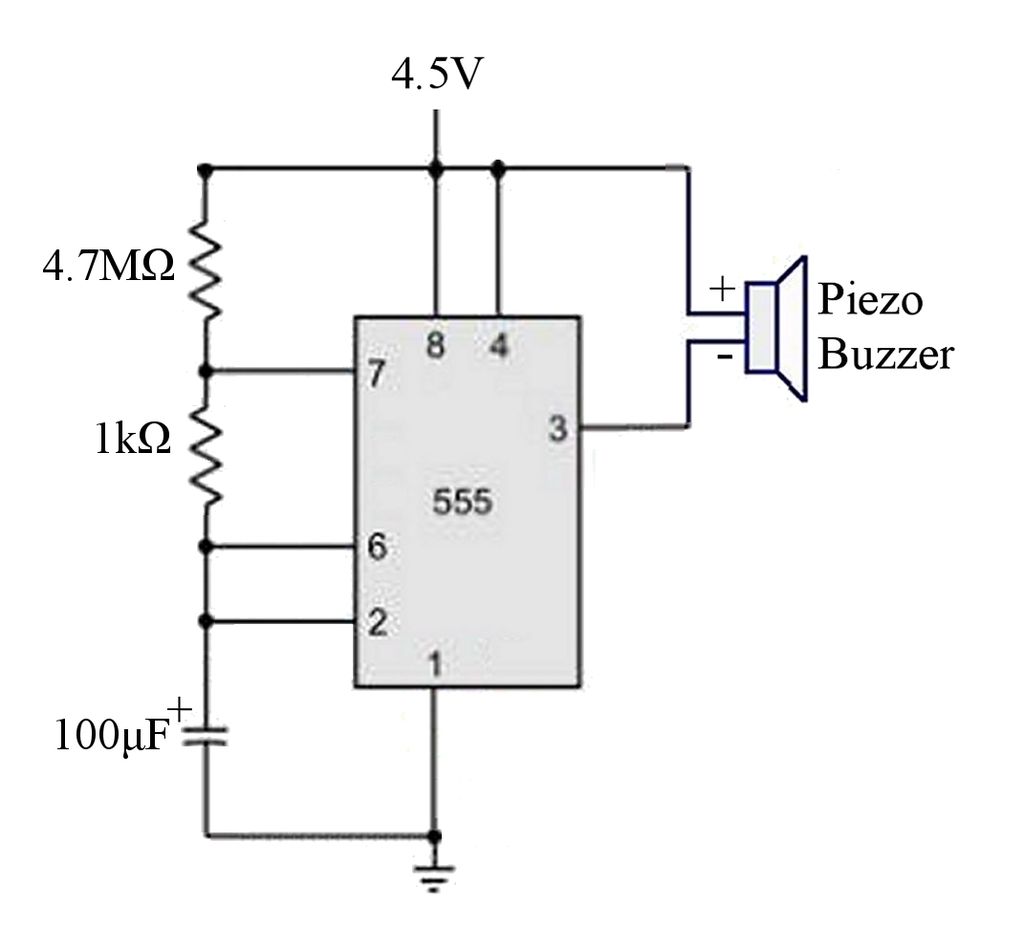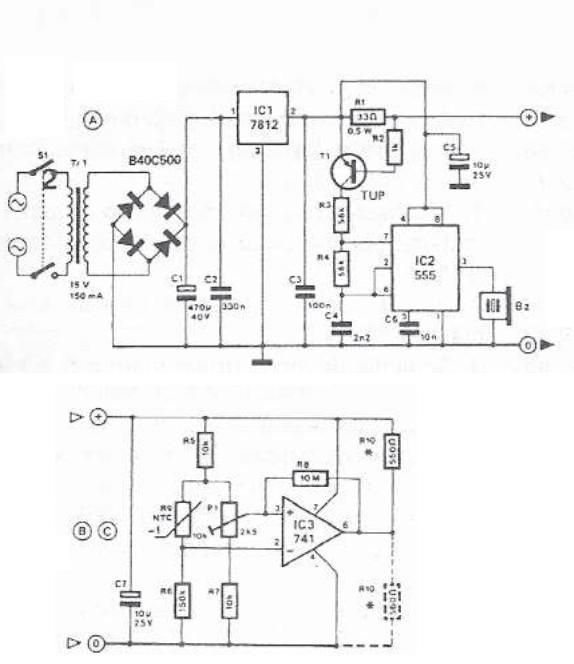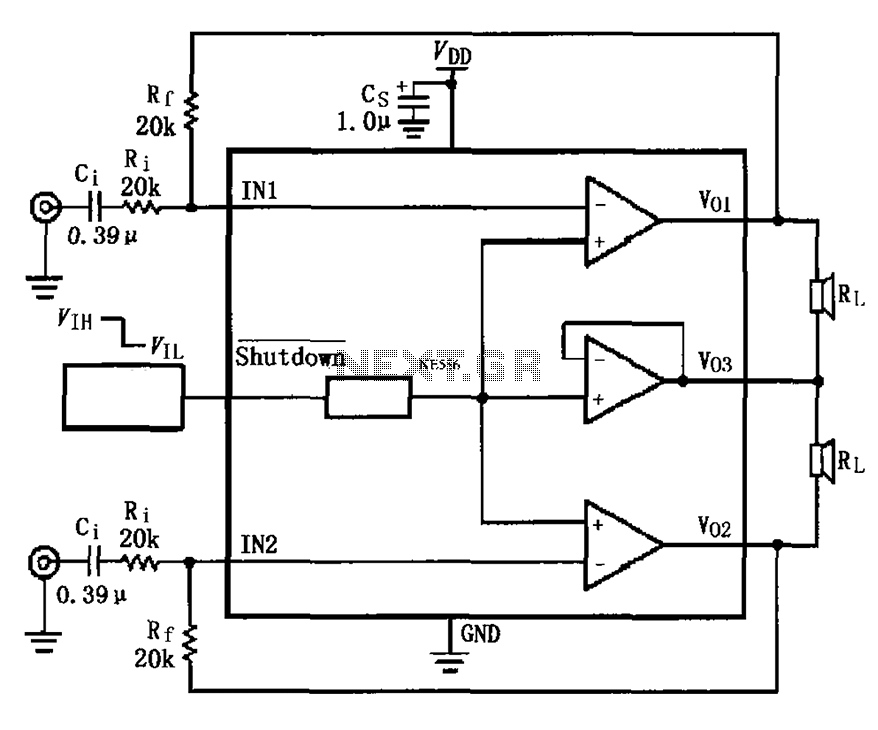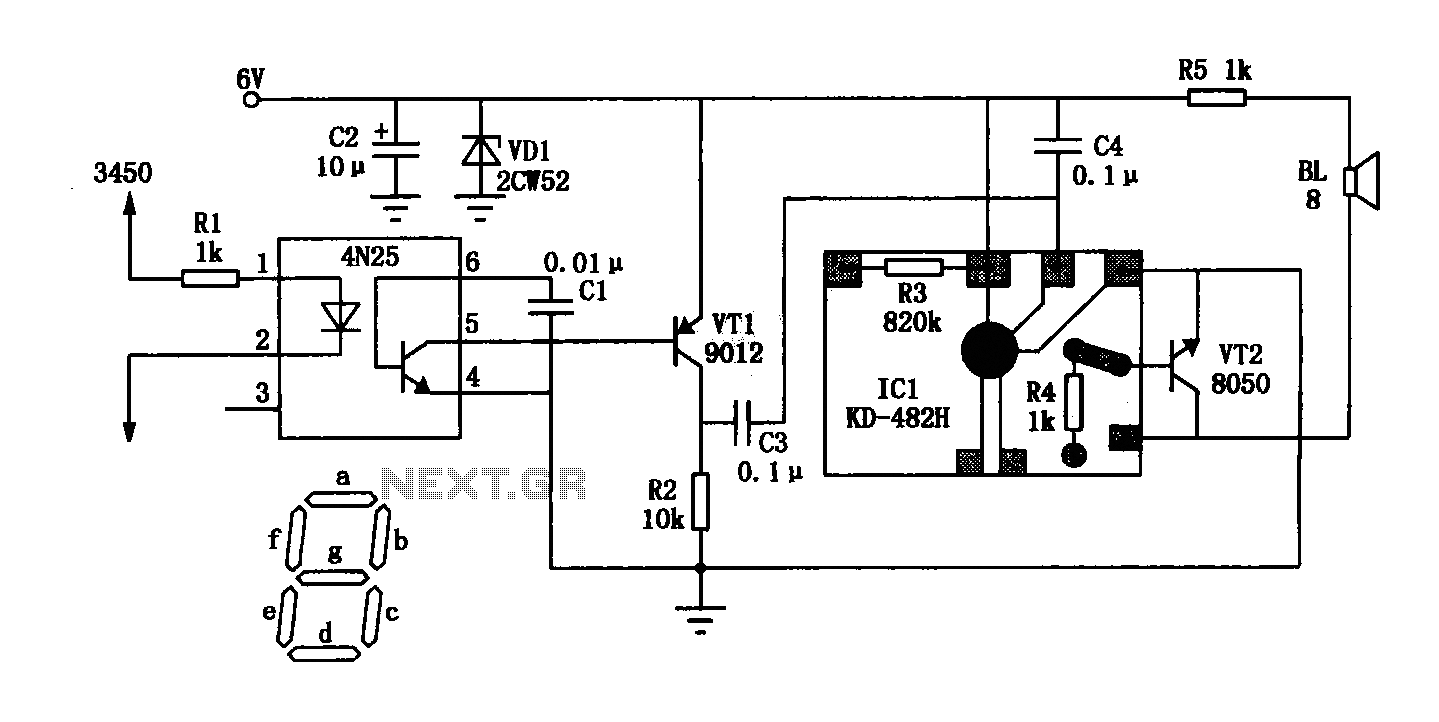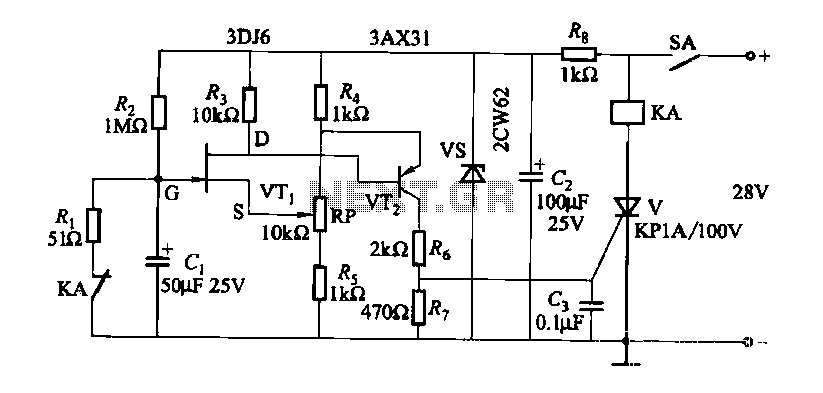
mic circuit
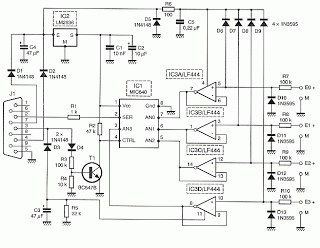
This module, available in a Stainless DIL 8 configuration, can independently measure four analog voltages ranging from 0 to 5 volts and transmit the results as four characters over a standard asynchronous serial link. Its serial output is compatible with TTL or CMOS levels and can be connected to an RS-232 serial input by adding a resistor. The MIC 640 can operate in automatic mode, sending four measurements every second, or in command mode, where it transmits four measurements controlled by an external logic signal. In this latter mode, the device consumes very little power, allowing it to be powered through the unused RS-232 serial port, provided that energy consumption in external circuits remains minimal. This circuit is readily available in France at a cost of less than 18 euros, making it an attractive option. The core component of the module is the MIC 640, identified as IC1 in the accompanying schematic. It is directly connected to the RS-232 serial input of a PC through a current-limiting resistor (R1). The CTRL pin determines its operational mode; when left unconnected, it automatically performs conversions on each input every second. When grounded, it triggers conversions for each input upon receiving a grounding signal. Grounding is facilitated through a transistor (Q1), which is controlled by the TXD output of the RS-232 via diode D4. This output also connects through diode D3 and capacitor C3 to generate the negative supply voltage for the input stage. The control lines DTR and RTS from the serial interface provide the positive supply voltage through diodes D1 and D2. This unregulated voltage serves as the positive power supply for the input stage, while a 5-volt regulator (IC2) stabilizes the voltage for the MIC 640. Due to the limited current available for both the positive and negative supplies (maximum of 10 mA), careful selection of components is essential, and replacements should not be made under any circumstances. IC2 is a low-power 5-volt regulator (2936 SM Z5) that consumes only 500 µA, compared to the 3 mA consumption of its equivalent, the 78L05. The input stage consists of four operational amplifiers configured as voltage followers, providing an input impedance greater than 100 MΩ. These amplifiers are integrated into a single package (LF 444 from National Semiconductor), with a total consumption not exceeding 800 µA for all four amplifiers. The use of components such as the TL 084, which consumes significantly more power (5.6 mA), is not acceptable. The input stage is safeguarded against excessive voltages using resistors (R7 to R10) and diodes (D6 to D13). While it is possible to forego protection diodes, their presence can slightly degrade the high input impedance of the LF 444 due to their leakage current. The maximum input leakage current of the LF 444 is only 50 pA, whereas even small diodes can leak up to 1 nA or more, which is significantly higher.
The described circuit provides a robust solution for analog voltage measurement and transmission, suitable for various applications where low power consumption and high input impedance are critical. The MIC 640's dual operational modes enhance its versatility, allowing it to adapt to different operational requirements, whether in automated or controlled environments. The careful selection of components ensures optimal performance while maintaining low power draw, making the circuit efficient for battery-operated or energy-sensitive applications. The design emphasizes reliability and accuracy, essential for precision measurement tasks in electronic systems.This tour, available in Stainless DIL 8 legs, can measure 4 analog voltage independent between 0 and 5 volts, and send the result of this measure in the form of four characters on a standard asynchronous serial link. Its serial output is directly TTL or CMOS compatible and can be connected to a serial input RS 232 by simply adding a resistor.
The MIC 640 can operate in automatic mode, thus sending the result of four steps every second, or in command mode, in which case it sends the result of four measures under the control of external logic signal. In this latter method that we use here. Its consumption is extremely low, it is possible to feed signals from the unused serial port RS 232, subject of course not to waste the little energy available in external circuits involved too greedy.
This circuit, easily available in France, costs less than 18 euro which makes it an ideal candidate for this achievement we will find the schema without tarder. Si you want more information about the MIC 640;`s complete data sheet entirely in French, is available for download by clicking this link.
The heart of the module is obviously the MIC 640, spotted IC1 on the figure below. It is directly connected to the serial input RS 232 PC via limiting resistor R1 current. His entry called CTRL to define its mode of operation. Left to the body, it makes it automatically perform a conversion on each input per second, whereas if it is reduced to levels as high as in this case, it triggers a conversion of each entry at each grounding. These earthed take place through the transistor Q1 controlled by the serial data output TXD of RS 232, via the diode D4.
This same output is through the diode D3 and this time the capacitor C3, to produce the negative supply voltage of the input stage that we discover in a moment. The control lines DTR and RTS serial interface they provide for the positive supply via diodes D1 and D2.
This voltage is unregulated, is the positive power of the input stage. By cons, it is regulated to 5 volts through IC2 so that it feeds a voltage very stable MIC 640. As the current and available for both the positive supply for the negative supply is still low (10 mA max), I had to carefully choose the components used and they will not be replaced under any pretext. IC2 is indeed a regulator 5 volts 3 feet very low: in one case in 2936 SM Z5 which absorbs only 500 uA.
For information, its "equivalent" the 78L05 consumes 3 mA in the same situation! The input stage meanwhile was achieved using four operational amplifiers effect transistor field-mounted voltage followers. This confers to the module input impedance greater than 100 MW. All four amplifiers are combined in one box, referenced LF 444 at National Semiconductor, whose total consumption does not exceed 800 uA for the four amplifiers!
Again, no question of putting such a TL 084 which face voracious with its 5. 6 mA! This input stage is protected from excessive voltages through resistors R7 to R10 and diodes D6 to D13. If you precede the various stages of converting physical quantities / voltage, you can possibly do without protection diodes that degrade somewhat the very high input impedance of 444 MQ due to their leakage current.
It is in fact only 50 pA maximum input of 444 LF while a diode, even small leaks, easily misses 1 nA or 20 times more! 🔗 External reference
The described circuit provides a robust solution for analog voltage measurement and transmission, suitable for various applications where low power consumption and high input impedance are critical. The MIC 640's dual operational modes enhance its versatility, allowing it to adapt to different operational requirements, whether in automated or controlled environments. The careful selection of components ensures optimal performance while maintaining low power draw, making the circuit efficient for battery-operated or energy-sensitive applications. The design emphasizes reliability and accuracy, essential for precision measurement tasks in electronic systems.This tour, available in Stainless DIL 8 legs, can measure 4 analog voltage independent between 0 and 5 volts, and send the result of this measure in the form of four characters on a standard asynchronous serial link. Its serial output is directly TTL or CMOS compatible and can be connected to a serial input RS 232 by simply adding a resistor.
The MIC 640 can operate in automatic mode, thus sending the result of four steps every second, or in command mode, in which case it sends the result of four measures under the control of external logic signal. In this latter method that we use here. Its consumption is extremely low, it is possible to feed signals from the unused serial port RS 232, subject of course not to waste the little energy available in external circuits involved too greedy.
This circuit, easily available in France, costs less than 18 euro which makes it an ideal candidate for this achievement we will find the schema without tarder. Si you want more information about the MIC 640;`s complete data sheet entirely in French, is available for download by clicking this link.
The heart of the module is obviously the MIC 640, spotted IC1 on the figure below. It is directly connected to the serial input RS 232 PC via limiting resistor R1 current. His entry called CTRL to define its mode of operation. Left to the body, it makes it automatically perform a conversion on each input per second, whereas if it is reduced to levels as high as in this case, it triggers a conversion of each entry at each grounding. These earthed take place through the transistor Q1 controlled by the serial data output TXD of RS 232, via the diode D4.
This same output is through the diode D3 and this time the capacitor C3, to produce the negative supply voltage of the input stage that we discover in a moment. The control lines DTR and RTS serial interface they provide for the positive supply via diodes D1 and D2.
This voltage is unregulated, is the positive power of the input stage. By cons, it is regulated to 5 volts through IC2 so that it feeds a voltage very stable MIC 640. As the current and available for both the positive supply for the negative supply is still low (10 mA max), I had to carefully choose the components used and they will not be replaced under any pretext. IC2 is indeed a regulator 5 volts 3 feet very low: in one case in 2936 SM Z5 which absorbs only 500 uA.
For information, its "equivalent" the 78L05 consumes 3 mA in the same situation! The input stage meanwhile was achieved using four operational amplifiers effect transistor field-mounted voltage followers. This confers to the module input impedance greater than 100 MW. All four amplifiers are combined in one box, referenced LF 444 at National Semiconductor, whose total consumption does not exceed 800 uA for the four amplifiers!
Again, no question of putting such a TL 084 which face voracious with its 5. 6 mA! This input stage is protected from excessive voltages through resistors R7 to R10 and diodes D6 to D13. If you precede the various stages of converting physical quantities / voltage, you can possibly do without protection diodes that degrade somewhat the very high input impedance of 444 MQ due to their leakage current.
It is in fact only 50 pA maximum input of 444 LF while a diode, even small leaks, easily misses 1 nA or 20 times more! 🔗 External reference
Warning: include(partials/cookie-banner.php): Failed to open stream: Permission denied in /var/www/html/nextgr/view-circuit.php on line 713
Warning: include(): Failed opening 'partials/cookie-banner.php' for inclusion (include_path='.:/usr/share/php') in /var/www/html/nextgr/view-circuit.php on line 713

